Ever slurped down a bowl of miso soup while eagerly anticipating the main event — the sushi with its fluffy rice — to show up at your table in a Japanese restaurant?
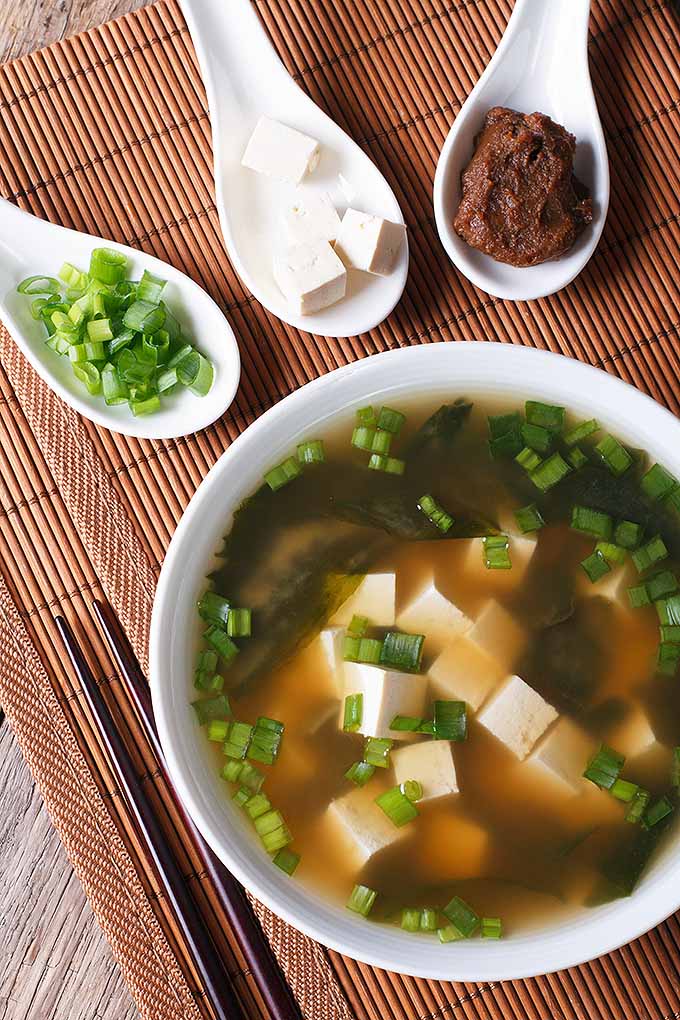
You may have idly wished for a few more chunks of tofu, but did you give any serious consideration to exactly what was in the soup you were eating?
Let’s learn about this flavorful ingredient — what it is, how it’s made, and how you can use it in culinary treats well beyond the humble sushi precursor.
Beans, Salt, and what?
At its essence, miso is fermented soybeans.
Soybeans are legumes native to East Asia, and they have been important to that region’s cuisine for more than 5,000 years.

The paste is made by combining soybeans, salt, and koji-inoculated grains such as rice, barley, or rye. Koji is the Japanese word for the fungus, whose scientific name is Aspergillus oryzae.
Mixed together, these ingredients ferment for many months, or even longer, depending on how strong a flavor is desired.
The longer the mixture ferments, the deeper the color and the richer the flavor of the resulting paste.
White miso, which is actually pale yellow in color and goes by the name shiromiso in Japanese, is fairly mild. The yellow version, shinshumiso, is often made with barley and has a deeper flavor than the white type. The red paste, also known as akamiso or simply miso, is quite salty and pungent.

Whatever the color, they all impart umami flavor, a meaty, earthy taste that’s not quite sweet, salty, sour, or bitter.
And this product is nutritionally beneficial, too.
Soybeans are packed with protein, and are a good source of B vitamins, vitamins E and K, and folic acid. Additionally, the fermentation process in these food products means the paste provides the digestive system with beneficial bacteria.
Do You Have to Make It?
While many Japanese families always have a batch of the deliciousness fermenting in the dark recesses of a cabinet, others simply purchase prepared products at the store.
In fact, cooks all over the world can now purchase the ready-made product — with differing flavors and textures — at specialty Asian groceries, at regular supermarkets, or online, such as this organic product from Amazon.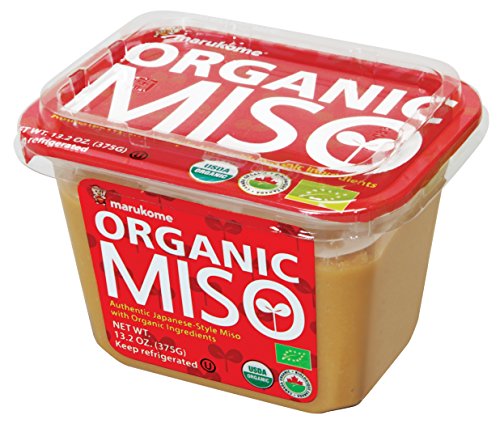
Marukome Organic Miso, available on Amazon
Got Some! Now What?
Because of its high salt content and potent flavor, this cooking component is generally not eaten on its own. Rather, it is used in small amounts to flavor other foods.
In addition to soup, this paste is an excellent addition to salad dressings, a wonderful complement to pork, fish, or chicken, and, mixed with vinegar and minced chiles, a delicious glaze for cooked vegetables.
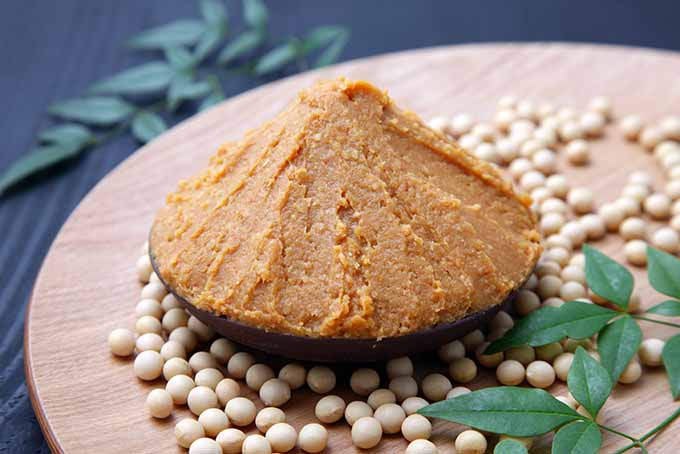
After opening the paste, store it in a tightly sealed container in the refrigerator. Lighter varieties will keep for about nine months, while darker types should be good for about a year.
When cooking with this additive, take care not to boil it, as overheating the paste can kill the aroma and flavor, as well the healthful enzymes it contains.
Practice Makes Perfect
If you’re new to using miso, you might want to start with the milder form. Don’t make the mistake I did when I first tried this condiment.

Sure of myself and my love of bold flavors, I went straight for the assertively flavored red paste, mixing it with oyster sauce and garlic and serving it over stir-fried chicken, shrimp, and broccoli.
Oy! I used too much paste in my sauce and my kids were mad as hornets, thinking that I’d tricked them, using their love of restaurant miso soup as an enticement to get them to try this new, supposedly similarly flavored dish.
Next time, I used the white version in a salad dressing, didn’t tell them it was miso-based, and HA! They didn’t even notice!
It didn’t make them love salad any more, but they didn’t complain about the dressing.
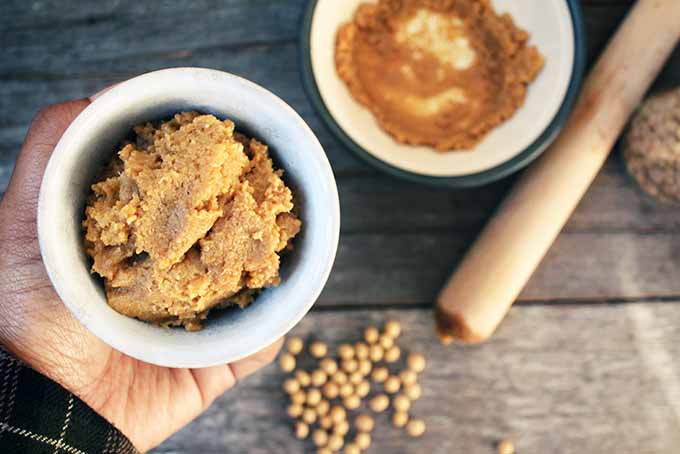
You’ll see recipes that call specifically for red or yellow or white, but you may want to start with the milder type and work up from there as you gauge your diners’ likes and dislikes.
Keep in mind that switching out the type of paste may alter the intended taste of the recipe.
As you get more familiar with this ingredient, you can go bolder with its flavors.
Or, you can just tell your family they can cook their own dinner. *Titter.*
Let’s put this delicious condiment to use!
Recipes
Miso Quinoa Stuffed Sweet Potatoes

From our friends at The Fitchen, these stuffed sweet potatoes are drizzled with a creamy dressing.
Ginger Miso Brussels Sprouts Salad

Also from The Fitchen, consider whipping up this delicious salad featuring Brussels sprouts, radishes, and a delicious umami-spiked dressing.
Blending Old and New
An ancient ingredient that has thoroughly modern applications, miso is certainly worth adding to your arsenal of cooking tools.
Maybe start with the white, more mildly flavored, paste and work your way up to the full-flavored red type!
Is your mouth watering?
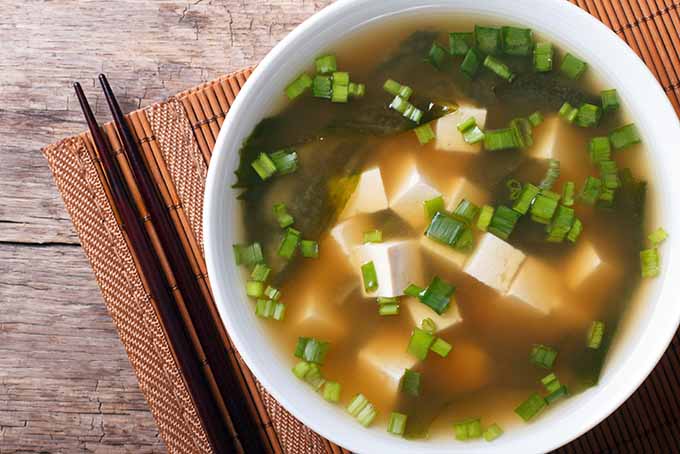
Instead of going out for sushi tonight, why not stop by an Asian market and pick up the base for a homemade flavor extravaganza? Try one or more of our recipes, and see if your family can guess the secret ingredient you’ve added!
And if you love this tangy condiment, you have to try spicy Sriracha sauce, another flavorful addition to any meal!
Or read our article on other popular fermented foods to incorporate even more flavor in your diet, while keeping your stomach healthy and happy!
Share your family’s reactions to your new flavor weapon in the comments section below, and tell us if you have other favorite recipes using this beloved Japanese standard.
Don’t forget to Pin It!

Recipe photo credits: © The Fitchen. Used with permission. Uncredited photos: Shutterstock.
About Gretchen Heber
Gretchen Heber is an Austin, Texas foodie whose passion for eating has lead to a fair competence in the kitchen, according to her family and to friends who are generally pretty excited to be invited to a dinner party at her home. Always on hand in her kitchen: a water-filled cup full of upright cilantro, at least a dozen lemons and limes, several heads of garlic, and fish sauce in the fridge.




I’ve seen miso paste as an ingredient in many salad dressing recipes and end up avoiding the recipes because I just don’t know what it is! Now that I see it is healthy, I’ll have to try to find some and make some dressings! Thanks!
So glad we’ve inspired you to try something new! Miso keeps for quite a while in the fridge, so no harm in picking some up and using it occasionally!